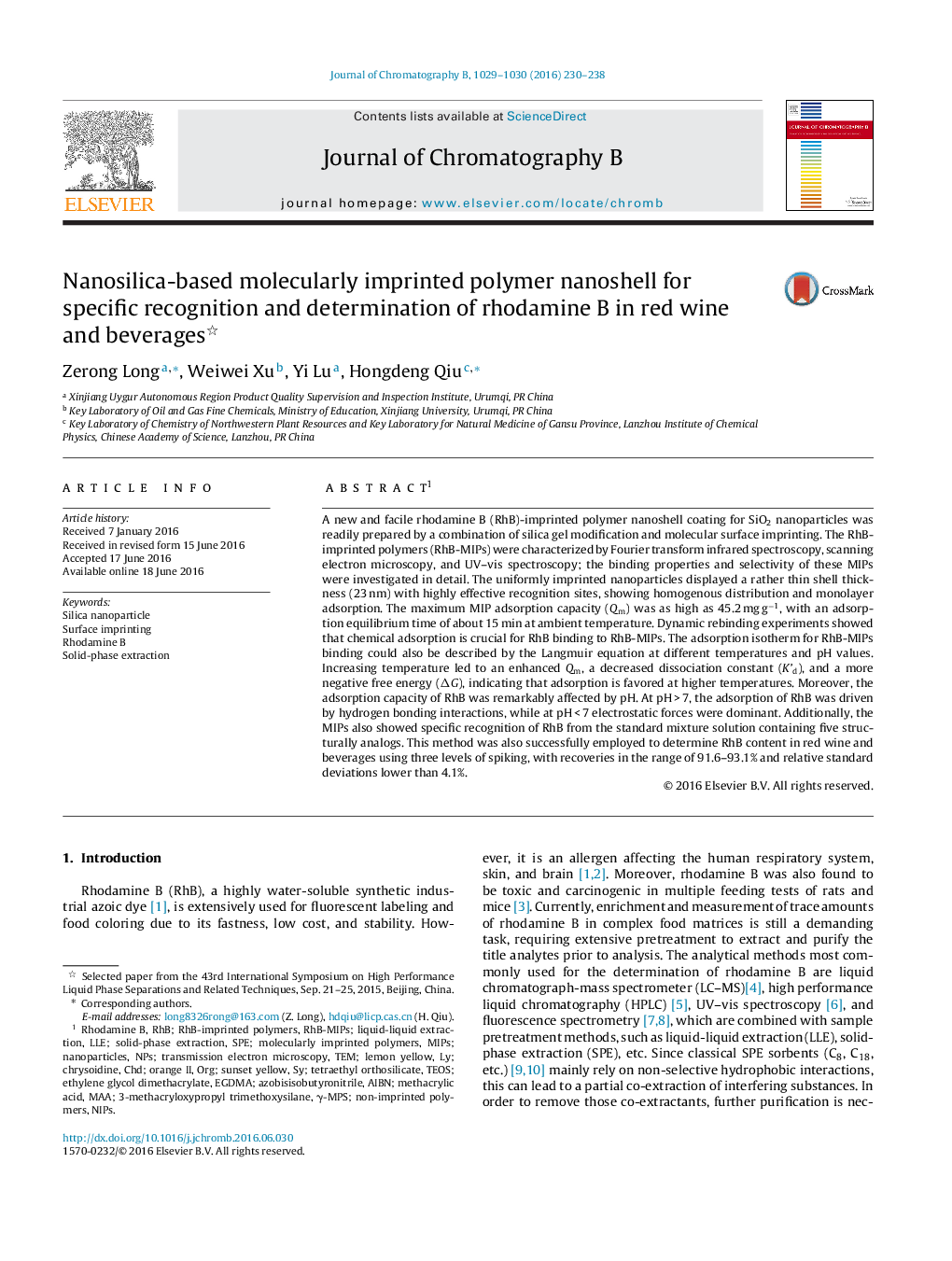| کد مقاله | کد نشریه | سال انتشار | مقاله انگلیسی | نسخه تمام متن |
|---|---|---|---|---|
| 1211832 | 1494027 | 2016 | 9 صفحه PDF | دانلود رایگان |

• New RhB-imprinted polymer nanoshell-coated nanoparticles were prepared.
• The kinetic adsorption and isothermal binding were investigated.
• The adsorption performance and mechanism was determined.
• High affinity capacity and specific recognition was ensured.
1A new and facile rhodamine B (RhB)-imprinted polymer nanoshell coating for SiO2 nanoparticles was readily prepared by a combination of silica gel modification and molecular surface imprinting. The RhB-imprinted polymers (RhB-MIPs) were characterized by Fourier transform infrared spectroscopy, scanning electron microscopy, and UV–vis spectroscopy; the binding properties and selectivity of these MIPs were investigated in detail. The uniformly imprinted nanoparticles displayed a rather thin shell thickness (23 nm) with highly effective recognition sites, showing homogenous distribution and monolayer adsorption. The maximum MIP adsorption capacity (Qm) was as high as 45.2 mg g−1, with an adsorption equilibrium time of about 15 min at ambient temperature. Dynamic rebinding experiments showed that chemical adsorption is crucial for RhB binding to RhB-MIPs. The adsorption isotherm for RhB-MIPs binding could also be described by the Langmuir equation at different temperatures and pH values. Increasing temperature led to an enhanced Qm, a decreased dissociation constant (K'd), and a more negative free energy (ΔG), indicating that adsorption is favored at higher temperatures. Moreover, the adsorption capacity of RhB was remarkably affected by pH. At pH > 7, the adsorption of RhB was driven by hydrogen bonding interactions, while at pH < 7 electrostatic forces were dominant. Additionally, the MIPs also showed specific recognition of RhB from the standard mixture solution containing five structurally analogs. This method was also successfully employed to determine RhB content in red wine and beverages using three levels of spiking, with recoveries in the range of 91.6–93.1% and relative standard deviations lower than 4.1%.
Journal: Journal of Chromatography B - Volumes 1029–1030, 1 September 2016, Pages 230–238